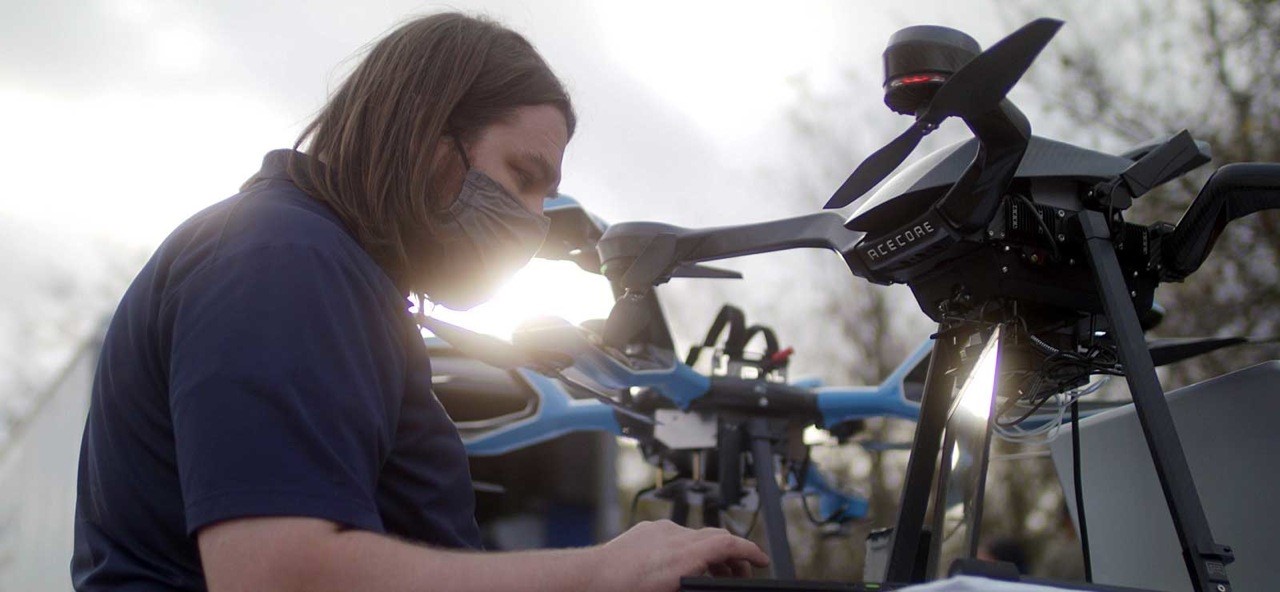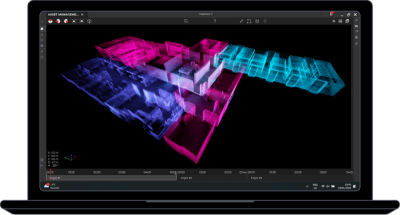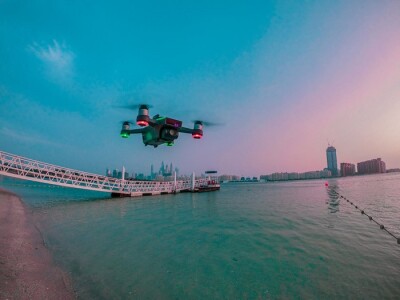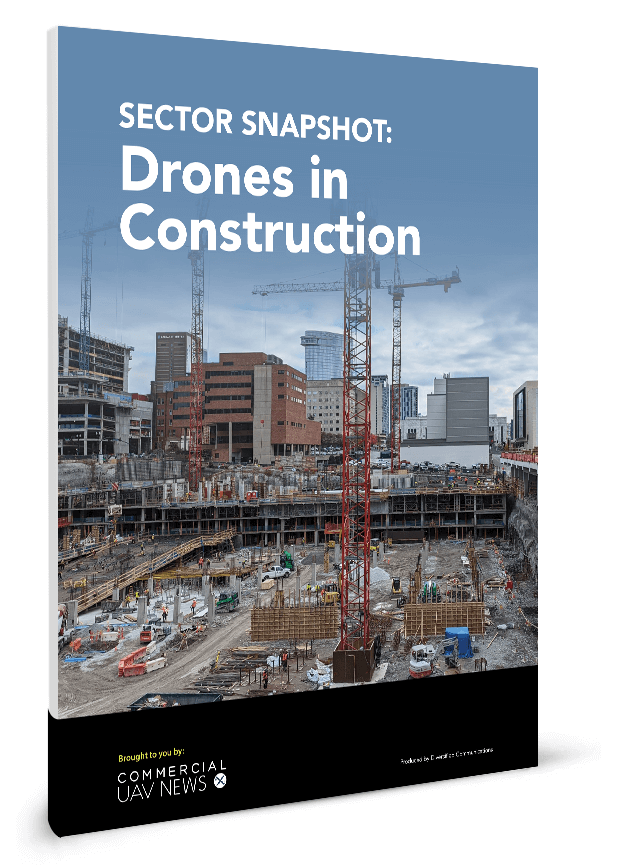We’ve seen the headlines that AT&T has created in the drone industry with flying Cows and a 5G collaboration with Uber. However, recent news about the AT&T 5G Innovation Studio is set to make an impact across the space in a wholly different manner.
The studio, located in Plano, Texas, brings together the power of AT&T’s business, consumer and network organizations to accelerate the path to market for new 5G-centric product offerings and key initiatives. The studio is designed to drive widespread adoption of technology like drones to enable operations beyond visual line of sight (BVLOS) for a variety of applications, including delivery.
 To get a better sense of how the Innovation Studio can support the drone industry as a whole, we connected with Oliver Spatscheck, a Distinguished Inventive Scientist at AT&T. He’s focused on driving innovation and data strategy in AT&T's Network Analytics and Automation organization with a focus on 5G technologies, making him the perfect person to detail what it will mean for drone operators to test and validate new 5G-centric applications at the Innovation Studio and beyond.
To get a better sense of how the Innovation Studio can support the drone industry as a whole, we connected with Oliver Spatscheck, a Distinguished Inventive Scientist at AT&T. He’s focused on driving innovation and data strategy in AT&T's Network Analytics and Automation organization with a focus on 5G technologies, making him the perfect person to detail what it will mean for drone operators to test and validate new 5G-centric applications at the Innovation Studio and beyond.
Jeremiah Karpowicz: What is it about 5G that makes it such a transformational technology? Because it’s not just about the higher capacity that is inherent when going from 4G to 5G, is it?
Oliver Spatscheck: With 5G you obviously have the higher bandwidth, but you also have lower latency. 4G has a latency rate of around 50 milliseconds. With 5G, you can expect a reduction to about one millisecond. Additionally, we can support more devices with 5G, but what’s essential is how that support is specific to certain needs and functions.
The way I usually put it is that before 5G, we built networks that users had to adapt to, but with 5G, the actual networks can adapt to user needs. The higher speed and lower latency of 5G are important components of 5G, but this flexibility allows us to support different use cases in very specific and powerful ways.
What kind of a difference could that mean for drone operators?
All of this is especially relevant in the drone space, because we need to support those devices in a very explicit way. As a drone flies higher, it can talk to a larger number of our cell sites. So that means it takes up a large amount of spectrum, which is not only expensive for the operator, but it also impacts a lot of other people. It also limits the number of drones that could actually fly in a certain area, because you can't really multiplex between them if there’s too many in the same specific area.
What 5G allows us to do is fine-tune those connections with our network. The communication with our cell sites can be optimized to the point that it doesn’t impact the remainder of our network as much as it would otherwise. That allows us to have more drones with less impact on other customers, which ultimately makes the technology cheaper but also more reliable.
What does that fine-tuning look like in a practical sense for a drone operator? And how are these developments connected to the debut of the 5G Innovation Studio?
What we're really doing here in the 5G Innovation Studio is making sure that all of the different use cases for drone operators are getting understood in the right context. What does it mean if I wanted to fly a drone from Houston to the Innovation Studio in Plano, which would be a BVLOS operation where I’d have to make sure I’d always have connectivity? What does that mean in terms of reliability? What does it mean in terms of route planning? All of those questions are the sort we’re asking and answering at the 5G Innovation Studio.
Right now we’re developing APIs that would not only expose all of those answers to operators but would also create a real-time information feed that is accessible to others. That will allow operators to do dynamic route planning. It would mean exposing data in our network to make drones and other vehicles that are operating in that ecosystem work better.
The investments we’ve made in 5G are to ensure that our network is actually capable of supporting these kinds of operations at scale and at a good price point. That’s not only true for drones but also for a variety of other devices. Drones provide us with some specific opportunities related to the flow and optimization of data though.
What do you mean?
The flow of data isn’t just on one direction because as the drone flies it can collect a lot of information from the sensors and cameras. We’re working on edge computing solutions that will ensure the processing of that data doesn't have to go all the way back in the central data center to be fully processed, further cutting down latency and increasing reliability. It’s on the “edge” because this type of computing brings real-time, high-bandwidth, low-latency access to latency-dependent mobile applications.
With this information, we can tune the network for what users actually need in a given scenario. With edge cloud, we can address and support very specific use cases. And the Innovation Studio is here to take these kinds of forward-looking applications and understand how our edge computing can support and define them. The Innovation Studio is the link between those drone applications and making sure that the network actually supports it, providing drone operators with the kind of network they actually need.
Much of that is directly connected to the Innovation Studio’s efforts to test autonomous drone control beyond visual line of sight using 5G, which could define drone delivery in a very real manner. What are some of the technical innovations or learnings that you believe will allow drone delivery to become a reality?
We’ve demonstrated how this will work with our BVLOS operation that was controlled by an edge node in our network, so the delivery capabilities are there. The biggest obstacle we still need to sort through is what happens if you lose communication. I think reliability is probably the biggest problem.
That said, I think there's work to do with tuning the network better so that you can scale it to support these operations. We’re talking about a system that might have hundreds or thousands of operations taking place in the same relatively small space, which makes it much trickier from a scalability point on the network side. But that’s also something we're looking into at the Innovation Studio. If you’re talking baseline functionality for drone delivery, we’re definitely there, it's more about solving the issues that relate to reliability on a small and larger scale.
Is that a place where you envision edge computing can be used for near real-time drone control? How are those capabilities distinct from how you could use this data in the past?
Over the last decade or so, most of the computing that happened with your data happened in a central place. Today, that is typically happening in one of the big cloud providers. If the bandwidth you need for that is moderate, the latency is in the hundreds of milliseconds. That can work fairly well if your network provider is reliable.
The challenges and bottlenecks come in for autonomous actions where you need much lower latencies for higher throughputs, because you have videos and other large data sets to analyze. That's where edge computing comes into play. The bottlenecks are eliminated because all of that processing takes place with very low latency, on this “edge”.
That’s especially relevant with drones, because you don’t want to encounter an obstacle and pass that information back to a data center to be processed before making a decision about how to avoid that obstacle.
As more drones enter the airspace and need to operate in the same area as even manned aircraft, these drones and aircraft need to be able to communicate with each other ahead of time before they actually come close enough that they could collide. Additionally, if there's an accident or emergency, you might have the police block out certain areas. All of that processing and communication can and needs to happen through edge computing.
Are there some specific applications of drone technology that you believe your network’s level of customization will open up for operators or in specific sectors?
There are a ton, the automated intelligent capabilities of our network will open up countless opportunities for operators. As an example of what that can mean, there are warehouses that have videos cameras monitoring machines that determine if an employee has all the proper safety gear on to operate it. If they’re not wearing it, the machine will not operate.
There’s great potential for the technology in the public safety sector as well, where you can ensure that paramedics and doctors have more information faster using connected ambulances and a drone that might serve as a first responder. In fact, that ambulance or drone could provide connectivity and edge computing to allow it to serve as a hotspot. When the paramedic actually goes out onto the accident scene, they could communicate to the ambulance and the ambulance could then communicates to the rest of the infrastructure because you have much more power in the ambulance to transmit data faster.
All of those models will be enabled by a 5G that network that can specifically support these functions.
At a high level, how do you believe the Innovation Studio will impact the future of the drone industry?
Our goal here is really to make sure that our 5G network can support all of those different use cases. However, we’re not the experts in all of those areas, which is why we’re reaching out to those experts trying to understand how this is all going to work together.
In many cases, it's an exploration on both sides, because we understand the network, but we might not understand the drones. By working together with drone experts, we’re looking to define the capabilities that will usher in a new era of aviation. By working together, we’re hoping to redefine those boundaries and create brand new opportunities.
If I’m someone that wants to start exploring some of the possibilities at the Innovation Studio and with 5G technology, what are some of the things I should be asking myself or considering?
Getting started on this sort of journey can be a challenge because people are sometimes unsure of what they want to do, or what they could do. It's like having a Swiss Army knife because you know you have multiple capabilities and options, but you can’t use all of those tools at once.
You can do a lot of things with drones and with 5G, but what do you want to do? Or what do you need to do? How do you actually want to operate in the airspace? What would you actually use that network? Ultimately, those are the types of questions we’re trying to help operators answer at the Innovation Studio. They’re all related to creating an environment where access to distinct technologies like drones is available, in different places, at different times, to everyone.
That’s part of the reason we made this a public place. We want to cultivate collaboration because we’re really looking to the community to identify how certain opportunities that they see might be better enabled with our network. That's really how we work together with drone companies and the entire UAV industry and beyond.
The Innovation Studio can be the start of a conversation about drone solutions and a collaboration to see those solutions become a reality. Where things go from there should define the future of the technology and the airspace.












Comments